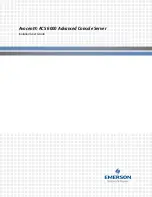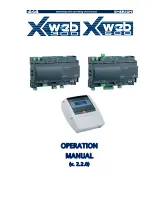
1. Installing Internal Optional Devices
Express5800/R110f-1E User’s Guide
87
Chapter 2 Preparations
Important Do not touch the terminal part of riser cards or PCI cards and the signal pins
of electric parts installed on the card. Installing cards with dirt or oil can
cause malfunction.
Tips
If you have trouble installing the card, remove the card once and try again. If you
apply excessive pressure on the card, a PCI card or riser card might break.
Note
•
Make sure that the head of a PCI card bracket is seated into the fixed slot.
•
Depending on type of PCI cards, the terminal part of the PCI card may be too
large to fit in the connector.
7.
Fix the PCI card with the screw you removed in step 5.
Tips
If the cable which is to be connected to the connector on the motherboard of the
server is provided on the board, connect it to the board before installing the riser
card to the server.
8.
Connect the riser card to the mother
board slot and fix the card with the screw
you removed in step 3.
When connecting the card, position the
terminal part of the card to the slot on the
motherboard and insert it.
9.
Attach the removed components.
10. Turn on the server and make sure that no error messages are displayed on POST screen.
For details on POST error messages, refer to
Chapter 3 (1. POST Error Message)
in "
Maintenance
Guide
".
11. Start the BIOS Configuration utility installed on the mounted board to set up the board.
Availability or startup and operation procedure of the utility depends on board. For details, refer to the
manual that comes with the board. If a PCI card including RAID Controller, SAS controller, and LAN
card which connects to any bootable device is added, the boot priority might be changed to the default
setting. In that case, configure the boot priority in the
Boot
menu of the BIOS Setup utility. For details
about the
Boot
menu, refer to
Chapter 2 (1.2.5 Boot)
in "
Maintenance Guide
".
PCI 1B slot
PCI 1A slot
















































